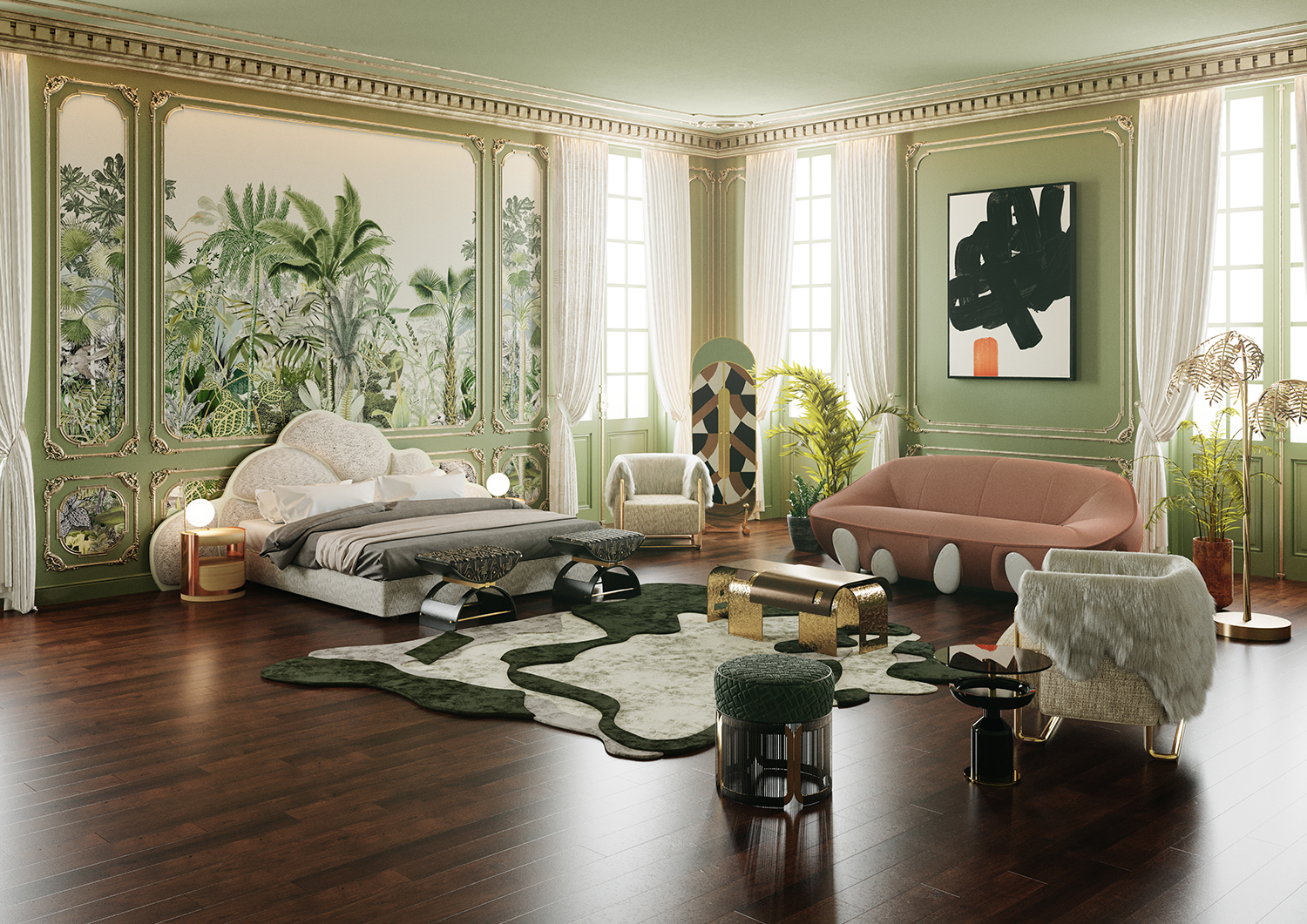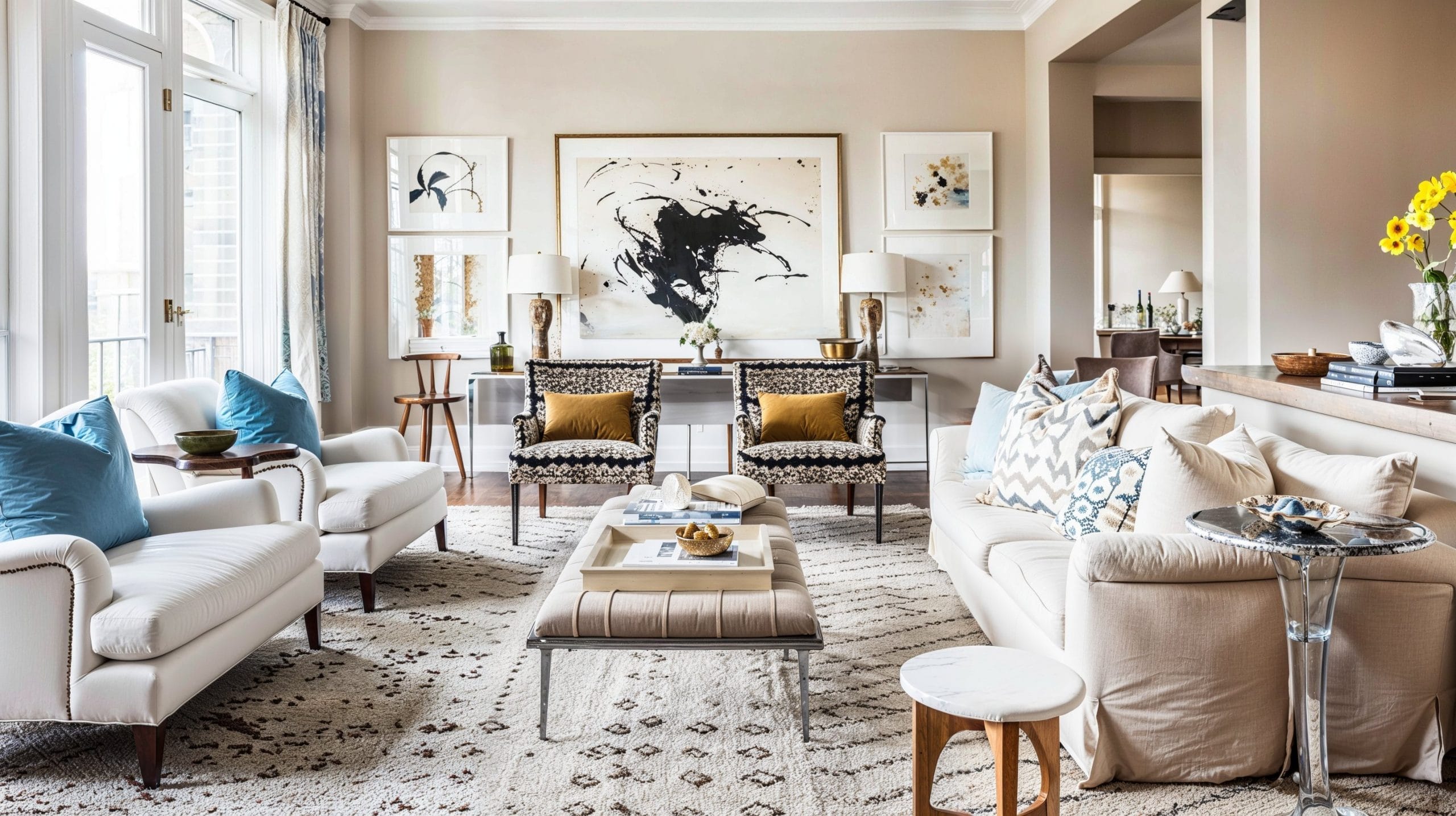Experience expert miami interior design for high-end home and office interiors.
Transform Your Home With Necessary Concepts of Inside Style and Looks
The art of transforming your home with the vital concepts of interior layout and looks needs a thoughtful approach that harmonizes color, balance, and spatial understanding. By recognizing the impact of color theory and the importance of texture and patterns, one can develop areas that are not only visually enticing yet additionally deeply personal. Accomplishing this balance involves greater than simple decoration; it includes a critical setup and an eager understanding of just how each element interacts within a space. As we discover these fundamental ideas, consider just how they might redefine your understanding of home and individual expression.
Comprehending Color Concept
Shade concept is an essential facet of indoor style that significantly affects state of mind, perception, and overall visual. Recognizing the concepts of shade concept allows designers to create rooms that reverberate psychologically with passengers while satisfying useful requirements (miami luxury interior design). Shades can be categorized into 3 key kinds: main, additional, and tertiary. Each classification plays an important function in establishing consistency within a room.
The mental influence of colors is extensive; cozy hues such as reds and oranges stimulate energy and heat, while trendy tones like blues and greens advertise peace and peace. The usage of complementary shades improves aesthetic passion, creating striking contrasts that can elevate an area's appeal.
Neutral colors, on the various other hand, act as a functional backdrop, allowing various other design aspects to radiate. It is essential to think about elements such as lighting and the area's function when picking a shade scheme, as these can change the understanding of shades throughout the day.
Eventually, a well-considered color pattern can transform an area, promoting a feeling of convenience and design that aligns with the citizens' choices. Mastery of color concept is, therefore, a crucial skill for any type of indoor designer intending to produce unified and inviting settings.
Attaining Equilibrium in Style
Just how can designers accomplish a sense of equilibrium in their spaces? Achieving equilibrium in design is basic to developing harmonious interiors. Designers can make use of three primary kinds of balance: balanced, unbalanced, and radial. Balanced balance includes organizing elements equally around a central factor, cultivating a sense of order and tranquility. This kind frequently includes sets of furniture or art work, enhancing aesthetic security.
Unbalanced balance, on the various other hand, depends on varying aspects that still accomplish a cohesive look. This method permits more dynamic and informal setups, offering rate of interest while keeping stability. By very carefully choosing varying dimensions, colors, and structures, developers can produce a visually engaging area that really feels well balanced yet energised.
Radial equilibrium highlights a main focal factor with components emitting outside. This design is commonly seen in circular designs, where furniture and design develop a cohesive surround that attracts the eye internal.
Eventually, accomplishing equilibrium needs thoughtful factor to consider of scale, percentage, and the connections between components. miami luxury interior design. By skillfully using these balance concepts, developers can transform spaces right into atmospheres that really feel both visually pleasing and functionally unified, enhancing the general experience for occupants
Importance of Spatial Recognition

A keen feeling of spatial understanding allows designers to identify prime focus within a space, assisting the viewer's attention to key functions while keeping a total sense of unity. It likewise aids in the tactical positioning of lights, which can considerably influence the assumption of area and mood. Understanding spatial connections makes it possible for the developer to cater to the certain demands of residents, guaranteeing that each area serves its intended purpose without endangering looks.
Ultimately, spatial recognition is critical for making best use of the potential of any interior space. By carefully considering the interplay between dimensions, design, and feature, designers can produce atmospheres that not just satisfy useful demands yet additionally stimulate a feeling of convenience and elegance, enhancing the overall living experience.
Integrating Structure and Patterns
Embracing a varied array of structures and patterns can substantially boost the visual and responsive appeal of an indoor room. The critical use different materials-- such as wood, steel, fabric, and stone-- creates depth and interest, making an area feel much more welcoming and dynamic. For instance, incorporating smooth surface areas with rough structures can establish an equilibrium that draws the eye and engages the detects.
When incorporating patterns, consider both scale and rep. Large patterns can serve as prime focus, while smaller, subtle check my site designs can enhance various other aspects without overwhelming the area. Layering patterns, such as pairing flower paddings with striped tosses, adds complexity and a sense of consistency if carried out attentively.
It is likewise crucial to maintain a natural shade scheme, ensuring that structures and patterns interact rather why not check here than complete for attention. By selecting a couple of vital appearances and patterns, you can develop a merged visual that mirrors your individual design while boosting the overall setting of the space. Ultimately, the mindful incorporation of these components can transform a mundane room right into an innovative environment abundant with personality and heat.
Personalizing Your Room
Producing a space that shows your character is essential to attaining an absolutely inviting setting. Customization in interior style enables you to infuse your special style and passions right into your home, changing it from a simple shelter into a sanctuary that talks with who you are. Begin by choosing a shade scheme that reverberates with your emotions-- strong tones can stimulate, while soft tones offer serenity.
Include artwork and decor that reflect your enthusiasms, whether it be traveling, nature, or abstract principles. Displaying individual collections, such as books, pictures, or mementos, can stimulate cherished memories and create focal factors within an area. Additionally, think about customizing useful items, like upholstered furniture, to straighten with your visual preferences.

Conclusion
To conclude, the improvement of a home with the vital principles of interior style and aesthetic appeal requires a thorough understanding of shade concept, equilibrium, spatial understanding, appearance, and personalization. Each aspect contributes dramatically to developing look what i found an unified and useful living setting - Architecture Firm. By thoughtfully integrating these principles, people can boost the aesthetic allure and psychological resonance of their spaces, inevitably fostering a home that shows one-of-a-kind identities while supplying comfort and usefulness